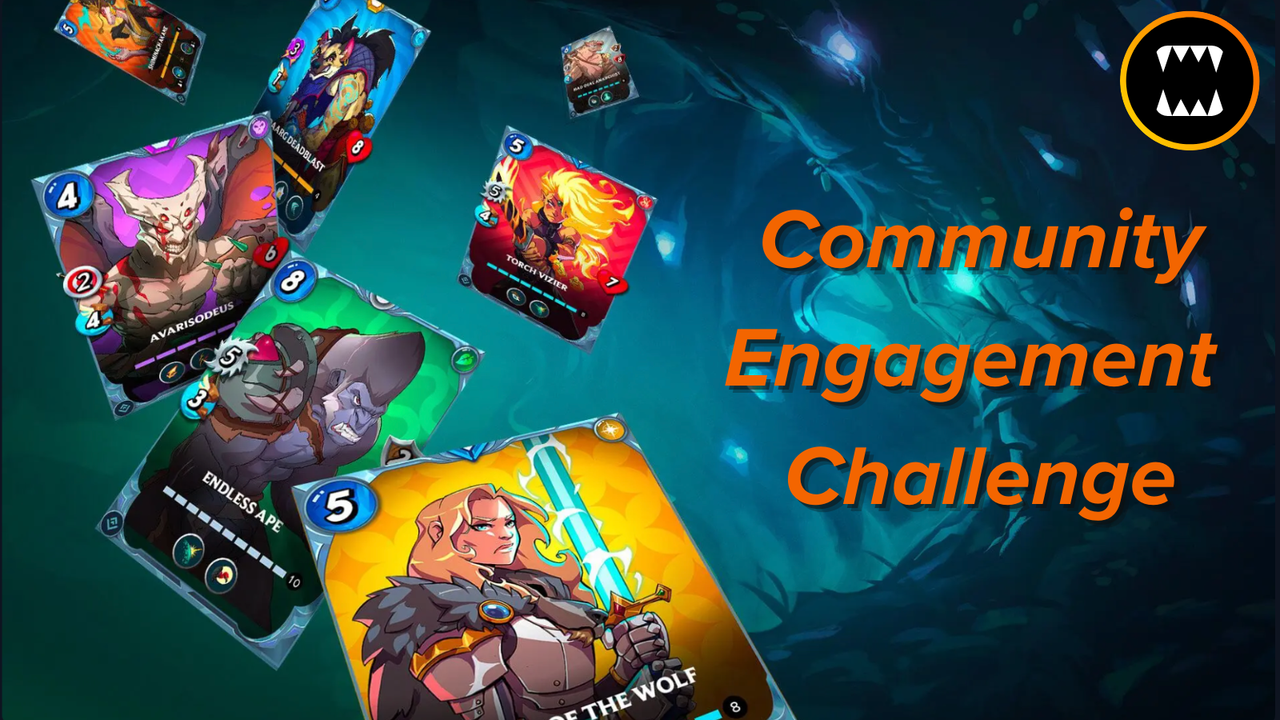
Introduction
This week, we're diving into one of the core mechanics of Splinterlands: the leveling system. Understanding how to combine cards and increase their levels is a crucial strategy to maximize your effectiveness in battles.
When I joined Splinterlands three years ago, I found the leveling system a bit confusing as a new player. At first glance, it might seem as simple as "level up your cards, and you'll do better," but there’s more to it than that.
Let’s break it down step by step.

Basics of Leveling Cards
So, what does leveling a card mean? This applies to both units and summoners. As cards level up, they gain improved stats and abilities, making them more powerful in battles.
Here’s a chart showing how many copies (BCX) you need to reach each level.
For example, to reach level 10, you'll need 400 copies of the card:
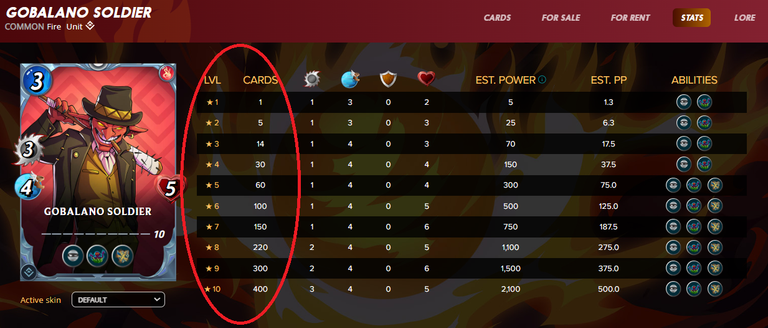
How to Combine Cards
Combining cards is straightforward. Here’s how:
- Select the cards you want to combine.
- Click the "+" icon.
- A confirmation dialog will appear, showing the level the card will reach after combining.
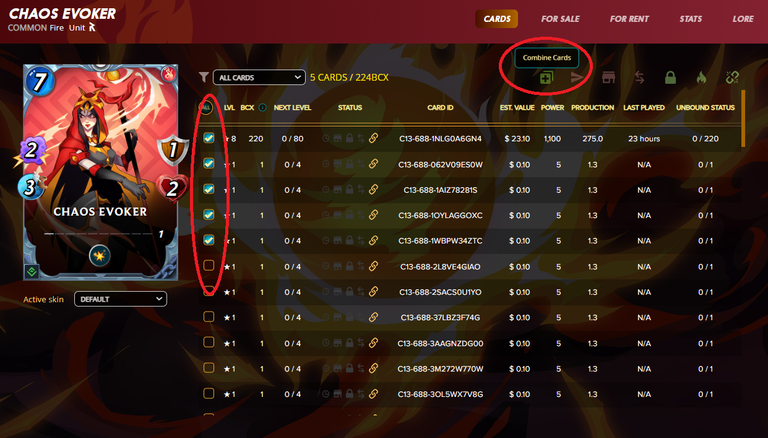
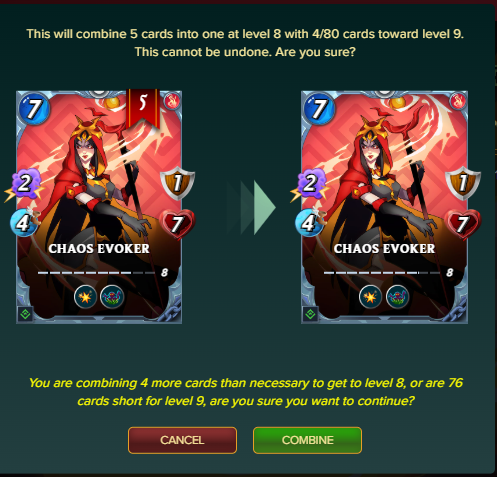
For more details, check the official Splinterlands guide on combining cards.

Leveling Units
Leveling units increases their stats and often unlocks additional abilities. Let’s look at an example.
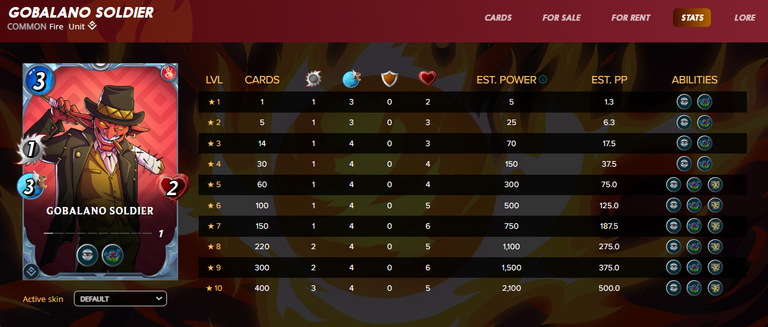
At level 1, this card has:
- 1 melee damage
- 3 speed
- 2 health
- Abilities: Sneak, Ambush
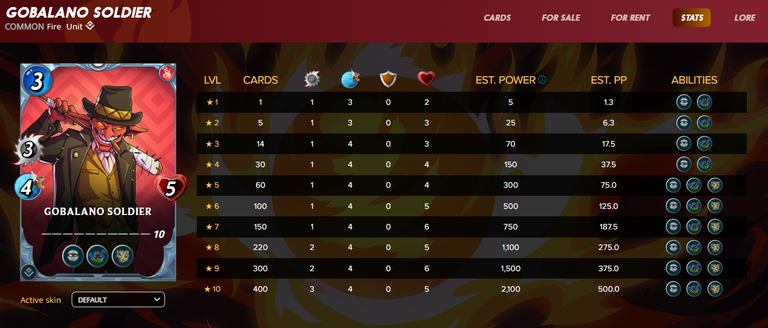
At level 10, it improves to:
- 3 melee damage
- 4 speed
- 5 health
- Abilities: Sneak, Ambush, Shatter
Basics summarized
Here you can see the level and the number cards (bcx) needed:
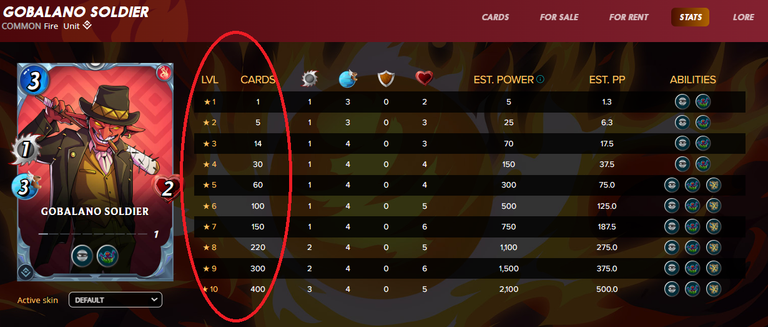
Here you can see the all the base stats increasements of a unit:
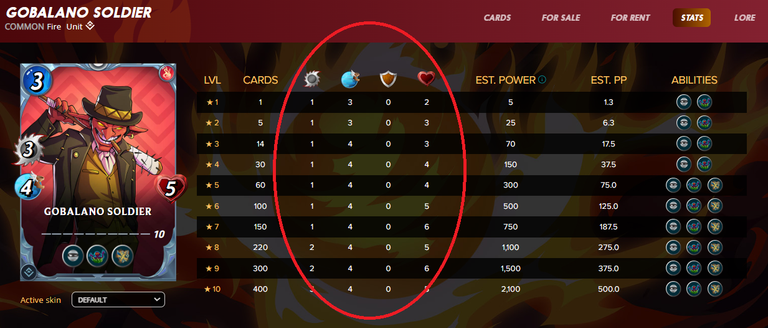
Here you can see all the abilities increasements of a unit:
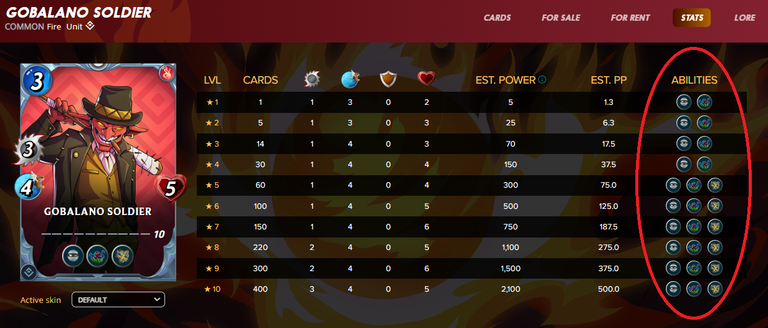
Each unit type—Common, Rare, Epic, or Legendary—follows the same general leveling process.
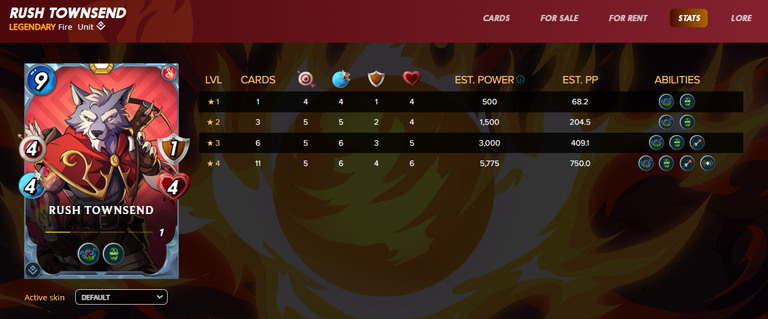
Most of the time, the higher the level of a unit, the better it performs.
WAIT—don’t rush out and buy maxed-out units just yet!
You can only use units up to a certain level in battle, and this is determined by your summoner's level. Summoners set the maximum level of units you can play in ranked battles, which we’ll cover in the next section.
As for brawls and tournaments, there are additional restrictions that I'll explain in a later chapter.

Summoners
Now that we understand how leveling units works, let’s dive into summoners. These are the most important cards to level up because they determine the maximum level of units you can use in battle.
Let’s look at an example to see how it works:
A level 1 summoner allows:
- Common: Level 1
- Rare: Level 1
- Epic: Level 1
- Legendary: Level 1
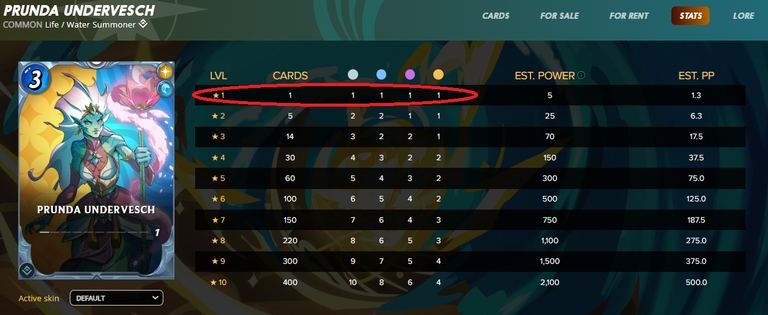
At level 6:
- Common: Level 6
- Rare: Level 5
- Epic: Level 4
- Legendary: Level 2
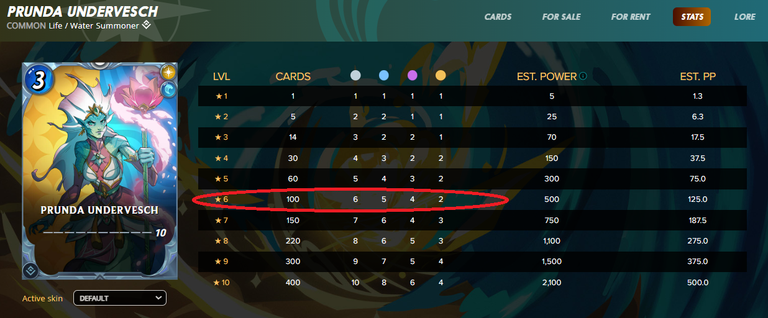
Note that gold version of the same card has the same table only it needs less copies to max and start with a higher level in this case 1 bcx card is already level 3:
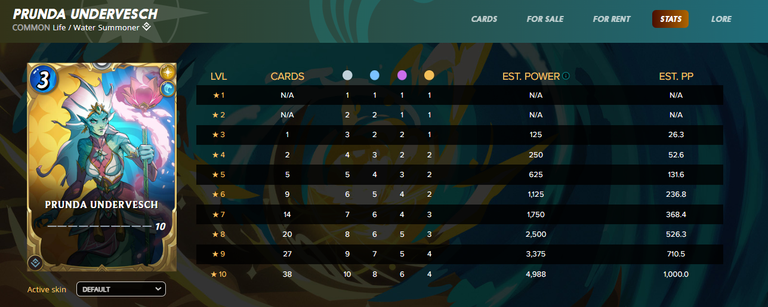
As you can see the higher the level of the summoner the higher level units you can use.
Note that for every type has a different table, this is an example for an legendary:
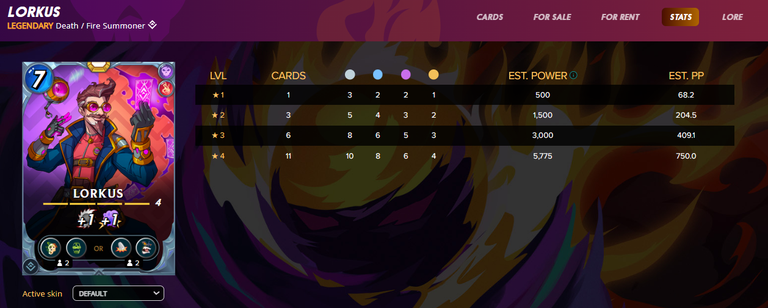
Next is an comprehensive image where all information is packed into
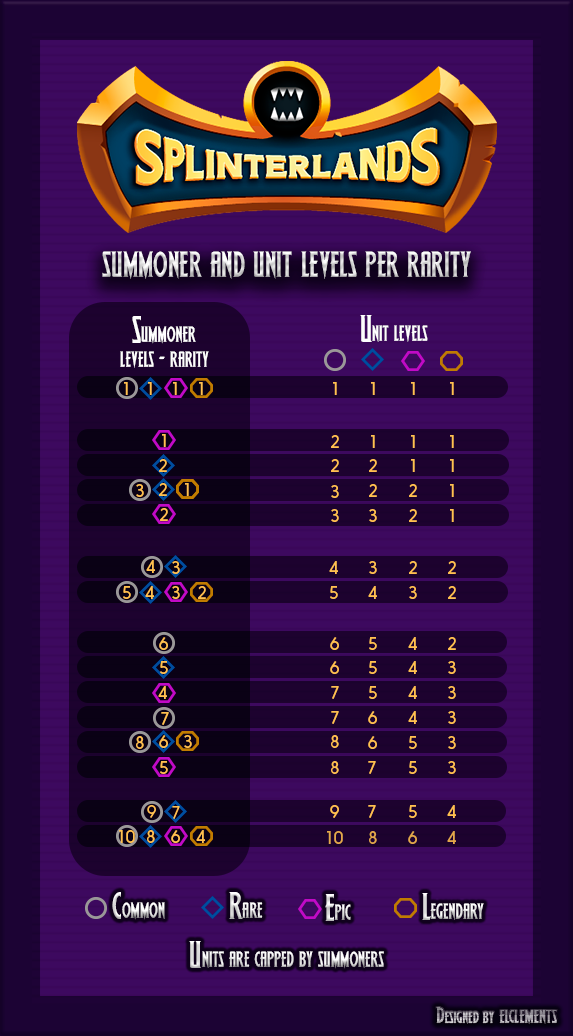
Source: splinterlands doc about summoning unit restrictions
Leagues
A while ago splinterlands has removed the league caps so now you can use all the levels in all leagues in ranked matches.
Still i think you can use this guideline to get you in a certain league
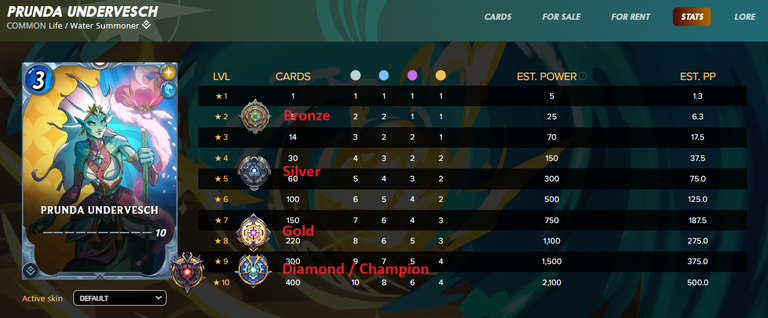
Battling
What happens if you have a higher-level unit but a lower-level summoner? The unit will be scaled down to the maximum level allowed by your summoner. This adjustment is indicated by an exclamation mark on the unit's card.
In the example below, I have a level 4 Iziar, but due to my summoner's level, it can only be played with level 2 stats:
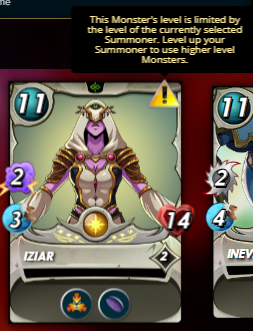
Brawl and tournaments
Brawl and tournaments still have league caps so when playing a gold level tournament or brawl you can only use the gold level caps. Again if you use higher level summoner or units they are restricted to the level cap.
The following table shows the level cap for summoners and units by league.
| Level Cap | Common | Rare | Epic | Legendary |
|---|---|---|---|---|
| Novice | 1 | 1 | 1 | 1 |
| Bronze | 3 | 2* | 2 | 1 |
| Silver | 5 | 4 | 3 | 2 |
| Gold | 8 | 6 | 5* | 3 |
| Diamond | 10 | 8 | 6 | 4 |
- Note that, in bronze-level tournaments, if you use a level 2 epic summoner, you can conjure up to level 3 rare units; in gold-level tournaments, if you use a level 5 epic summoner, you can conjure up to level 7 rare units.

Final Thoughts
Mastering the leveling system is a key step toward improving your game in Splinterlands. From combining cards to understanding summoner limits, these strategies will help you build a stronger deck and climb the ranks.
What are your favorite strategies for leveling cards? Share your tips in the comments!
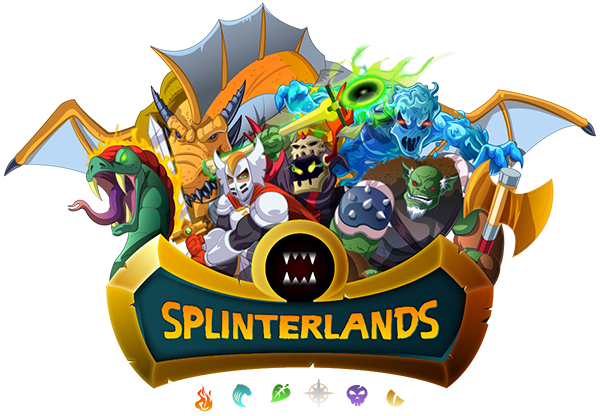
Do you also want to be part of this amazing play to earn game consider using my refferal link.
Delegate Tokens and HP to Fallen Angels to earn weekly rewards!
Delegate | Join to the guildThis post has been supported by @fallen.angels guild!
Well done laying out the basics of card levelling. I just wish that league cap was reinstated and not just limited to brawls and tournaments.
Thanks, sometimes I also want the league caps back. But in general i think its better for the game if they are gone.
Only more is needed for the more casual low level player imho 🤣
Thanks for sharing! - @yonilkar
